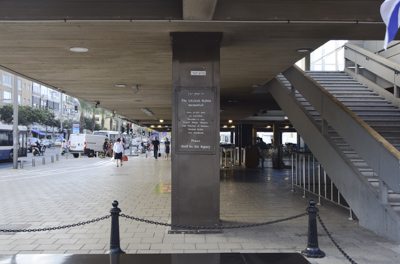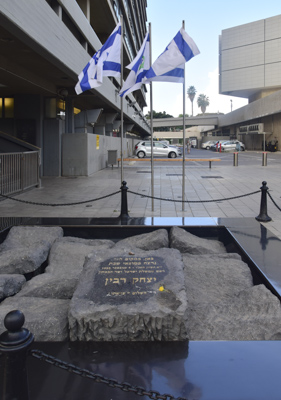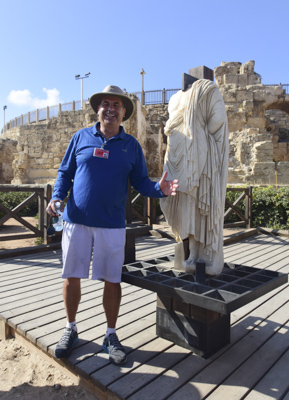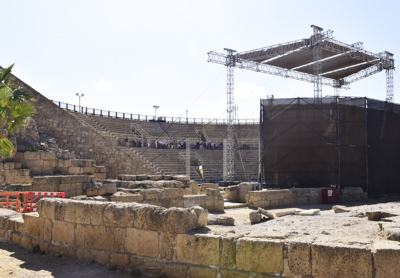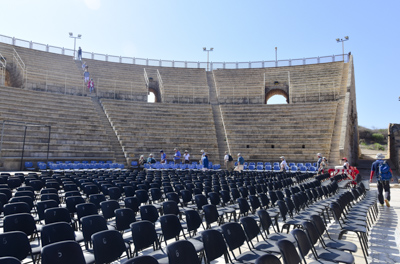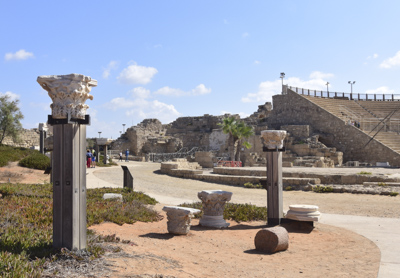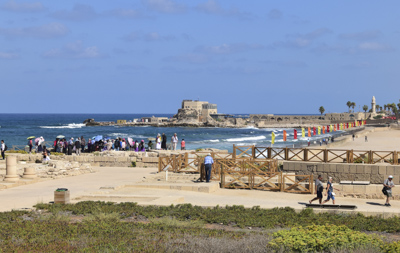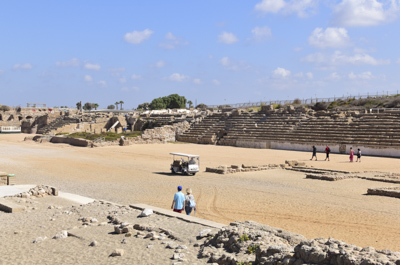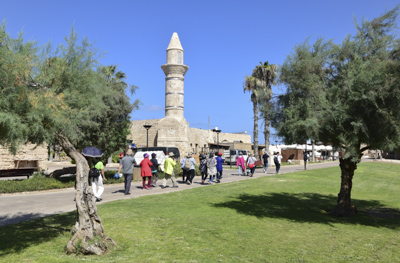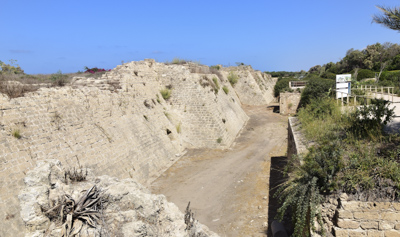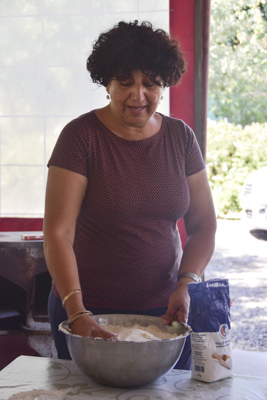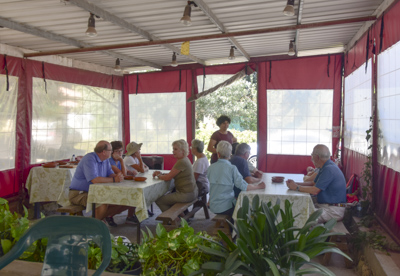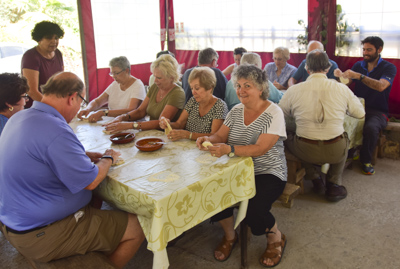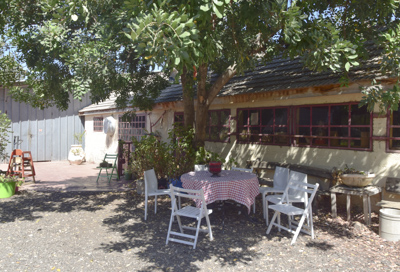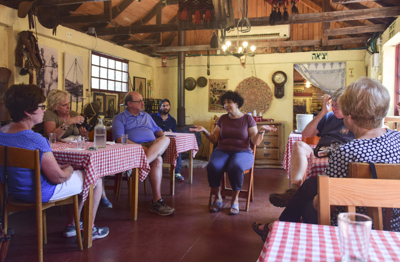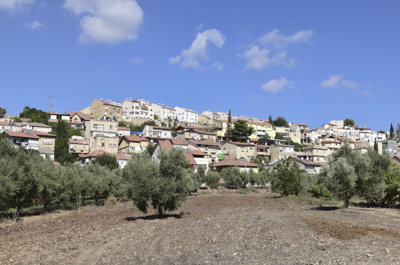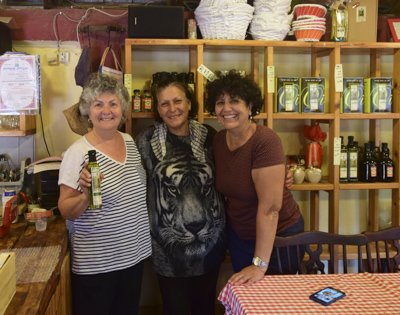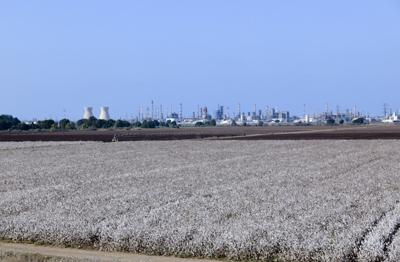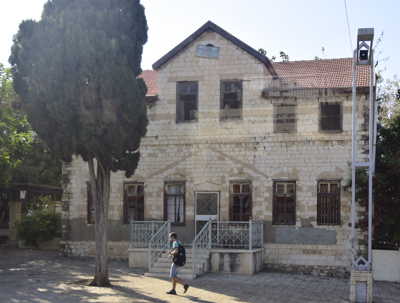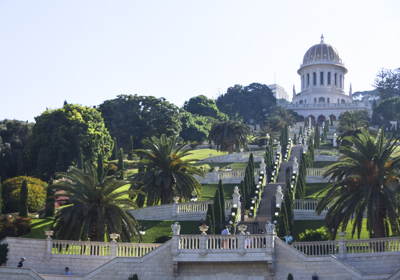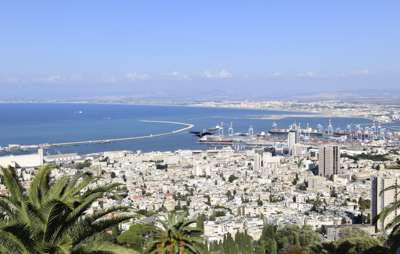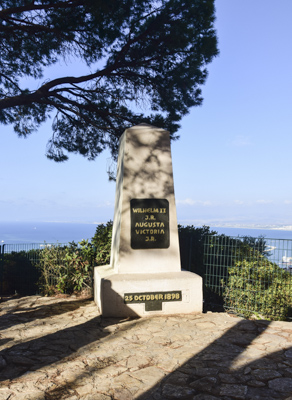Tuesday – October 3, 2017
We began the day on a sad note when we visited the tragic site in central Tel Aviv where Yitzhak Rabin was murdered on November 4, 1995. He was the fifth Prime Minister of Israel and was serving his second term in office. Rabin supported the Oslo Accords which was beginning the process of a peace treaty based on the “right of the Palestinian people to self-determination.”
Prime Minister Rabin walked down the steps in the photo above, after attending a peace rally and a young right-wing “ultranationalist” shot Rabin and killed him. It was sad to think that if Yitzhak Rabin had lived, the world might have had a treaty between Israel and Palestine 22 years ago and perhaps peace in the Middle East today.
Yitzhak Rabin said, “We must think differently, look at things in a different way. Peace requires a world of new concepts, new definitions.”
Tel Aviv is the only city in Israel with a river and we drove across the Yarkon River on our way out of town. Yarqon means “greenish” in Hebrew. The Arabic name is al-Auja which means “the meandering.”
We were on our way north along the Mediterranean coast toward the city of Haifa. We stopped at the Roman town of Caesarea which had been a Phoenician naval station and was given to Herod the Great in about 30 BC.
Rafa explained the long and complex history of conquests of the Roman port. After Roman rule, Caesarea became the Byzantine capital of the province. In the 7th century, the city was conquered by the Muslims, followed by the Crusaders. In the last century Bosnian Ottoman immigrants settled nearby and more recently, a Jewish town was established near the ruins of the old city.
The Roman amphitheater is currently used for concerts:
Today, the ancient port city is a national park, the Caesarea Maritima, and is undergoing restoration and development due to a charitable foundation originally set up by Baron Edmond James de Rothschild.
Today the Rothschild Caesarea Foundation is chaired by Baron Edmond’s great grandson, Baron Benjamin de Rothschild. Caesarea remains the only locality in Israel managed by a private organization rather than a municipal government.
The original port was built during the first century BC and was the largest artificial harbor built on the open sea.
A hippodrome was located near the harbor which was used for horse and chariot races.
Reconstruction of the Caesarea Harbor Vaults will give future tourists an experience of a magnificent Roman Temple built to honor Caesar Augustus:
Tourists walking past the 19th century minaret of the Bosnian mosque:
Remnants of the walls and moat built by Louis IX in 1251:
Walking around Caesarea was a stroll through history from Roman to modern times with cultural/historical glimpses in between.
Afterwards, we drove to Yonay Olive Farm and met the owner, Shoshi Yonay. She immediately took us into a workroom and demonstrated how to make pita bread.
We watched Shoshi mix flour, salt, yeast, and a bit of olive oil together in a bowl. She gave each of us a lump of dough. Then we kneeded and shaped our individual pita breads and added Shoshi’s pre-mixed toppings.
Shoshi put our pitas on the hot tray inside her double-flame oven. The breads quickly baked and were ready in a few minutes.
Such a fun activity and we were ready for lunch! We walked over to Yonay Farm’s dining room and shop.
We ate a delicious vegetarian lunch of farm-fresh salads topped with fantastic Yonay Farm’s olive oil dressing and herbs and, of course, our fresh baked pita bread.
Shoshi talked about Kfar Hasidim, the cooperative farming village which her husband, Ehud’s great uncle founded in 1925 when a small group of Polish Jews emigrated from Poland. Ehud’s mother was the daughter of the rebbi and his father was a mounted ranger who communicated with local Bedouins and wrote two books about their culture.
Ehud lived in the United States for 30 years but returned to Israel to continue the farm with his wife, Shoshi. Ehud died in August 2012 and Shoshi continues to run the operations of the farm, shop, and restaurant and she conducts tours for interested tourists.
We bid our farewells to Shoshi Yonay and drove to the northern city of Haifa. On the way, we passed large cotton fields and learned that Israeli cotton is among the finest in the world.
As we drove into the port city of Haifa, we saw the commercial port in the distance and the Israeli Naval Base in the harbor. We passed several distinct buildings on Ben Gurion Avenue and Rafi explained we were in the “German Colony.”
The “German Colony” is a small area in Haifa which was founded in the late 1860’s by German Templers. They were a religious Protestant sect which settled in northern Israel in the early 2oth century and developed the neighborhood. By 1941, most of the Templers were sent to internment camps or deported to Australia.
Today, some of the old Templer buildings have been restored and turned into cafes, boutiques, and restaurants and the colony has become a center of Haifa nightlife .
The German Colony is located at the foot of the beautiful Bah’ai Gardens. Our tour bus drove up to the top of Mount Carmel above the gardens and we admired the view of Haifa’s magnificent harbor.
We looked down on Bah’ai Gardens, which is part of the Bah’ai World Center, a UNESCO World Heritage Site.
The Bah’ai faith was established 200 years ago by a Persian prophet, Bab who wanted to spread his beliefs. The religion teaches the essential worth of all religions and the unity and equality of all people. Today, there are seven million followers of the Bah’ai faith in the world, making them the 4th monotheistic religion.
In ancient Canaanite culture, Mount Carmel was considered a sacred place. In modern times, according to a plaque, two historic events had occurred on the site. Wilhelm II, Kaiser of Germany, visited the mountain in 1898 and met with Theodor Herzl, then called “the prophet of the Jewish State.” The other event was the end of 402 years of Turkish rule when the army of British General Allenby captured Haifa in 1918.
We descended Mt. Carmel and our tour bus drove to the lovely Bay Club Hotel. We checked in and rested……
What a day!!!
